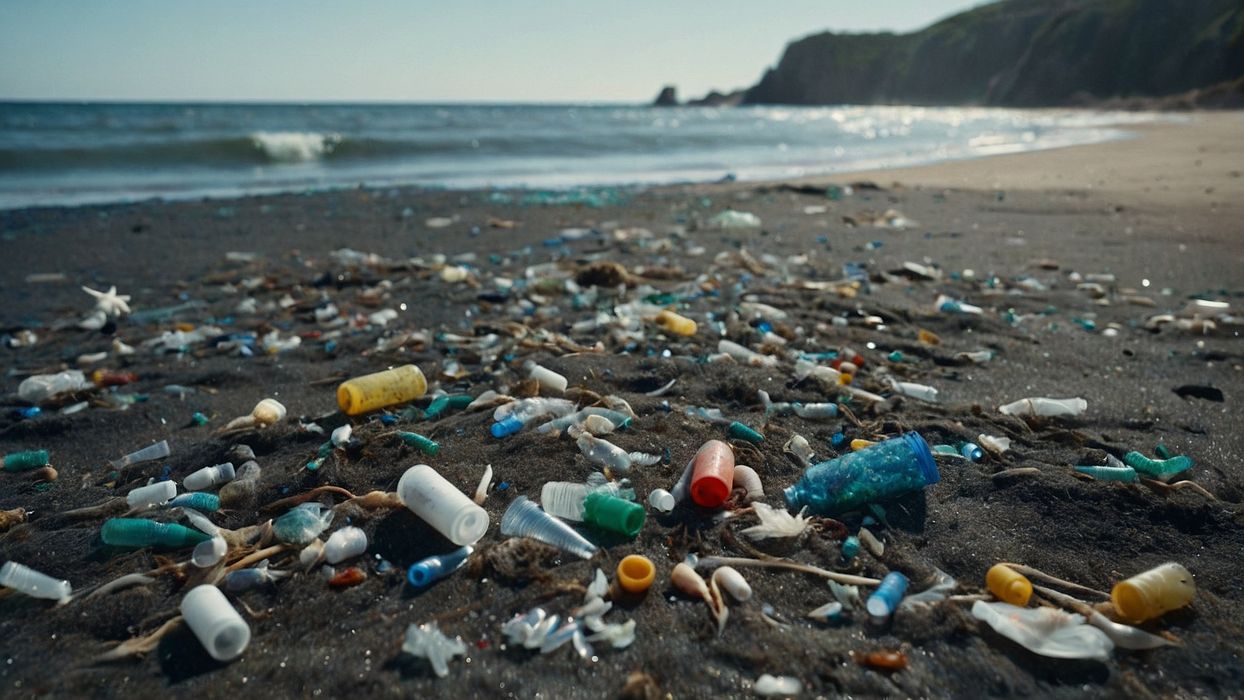
The microplastics problem is far worse than anyone suspected.
Microplastics are microscopic particles of plastic that have entered the environment through gradual mechanical breakdown. Eventually the particles are small enough to become mobile through the movements of air and water.
Today microplastics have been detected on virtually every place on Earth, even in very remote regions where there are no local sources of plastic. Evidently the microplastics are blowing all around the world. You are likely breathing some right now.
The fear is that microplastics will contaminate food and water, and ultimately be absorbed into the human body. There, the unpredictable chemicals in the microplastics may have adverse health effects on everyone.
The news is reported in the Guardian, where a study revealed terrible news. They write:
“The scientists analysed 62 placental tissue samples and found the most common plastic detected was polyethylene, which is used to make plastic bags and bottles. A second study revealed microplastics in all 17 human arteries tested and suggested the particles may be linked to clogging of the blood vessels.”
In other words, people are contaminated with microplastics even before they are born. What’s most startling is that ALL of the samples had microplastic contamination. We are all carrying microplastics with us, for good or bad.
This is caused by dumping untold amounts of waste plastic into the ocean and landfills, where they eventually escape and spread around the planet. There are increasing calls for regulation of plastic use because of growing awareness of the issue.
What does this have to do with 3D printing?
One could say “not much”, because the vast majority of plastic is not used in 3D printing. It’s in the plastic bags, holders, packaging and objects we use everyday.
On the other hand, this attention to the issue will inevitably lead to a redirection to the use of new, more friendly materials.
In fact, I’ve already heard from 3D printer manufacturers that they are increasingly receiving requests for more eco-friendly materials from customers. These customers produce parts for other customers that are on the front line of microplastic production, and they’re beginning to feel the heat.
However, today we all still use PLA, ABS, ASA, PETG, Nylon, PP and other materials that contribute to the microplastic problem. Recycled filaments don’t help that much, because they too can be discarded, break down and become microplastics.
What’s really needed are new types of plastics that actually break down properly when let loose into the planetary environment. Consider wood as a material: it rots away when discarded, and re-integrates into the environment safely. That’s the feature we need on plastics.
However, I am not aware of any upcoming solutions to this. I am aware there is a lot of research happening in this area, however, so we might expect commercializable solutions to emerge sooner or later.
It’s likely that as time passes we will see a gradual shift from our current favorite 3D printing materials to new, more eco-friendly alternatives.
Via The Guardian
